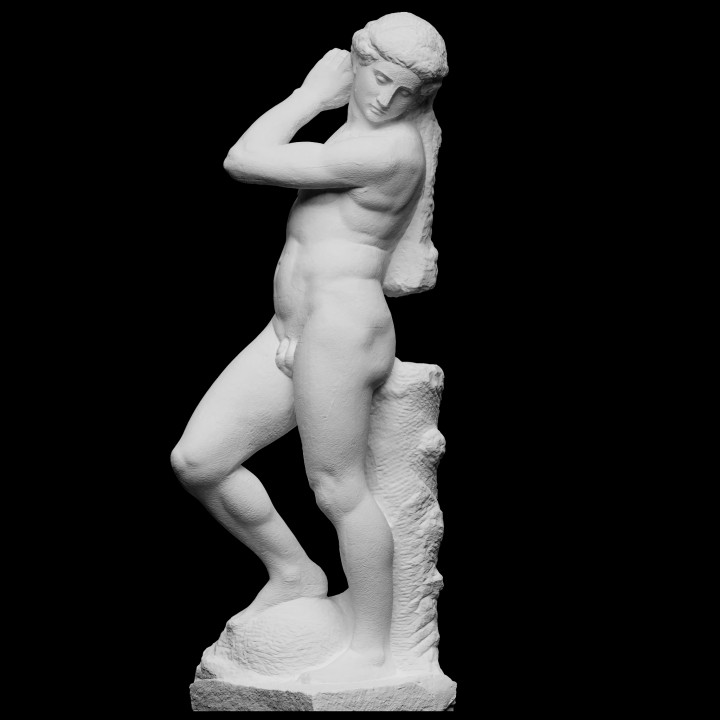
Apollo
myminifactory
Dating back to around 1530, Apollo is a striking 1.46 metre marble sculpture crafted by the renowned Michelangelo during the height of the Renaissance period. Despite being unfinished, this masterpiece remains a topic of debate among art historians and enthusiasts alike regarding its subject matter and intended final form. The uncertainty surrounding the sculpture stems from its incomplete state, which has led to multiple theories about its meaning and purpose. In 1530, Florence was still reeling from a nine-month siege during the War of the League of Cognac, resulting in the defeat of the Republic of Florence and the imposition of Imperial Spanish rule. Pope Clement VII appointed Baccio Valori as governor, who commissioned Michelangelo to create the Apollo sculpture for his private palace. However, work on the piece was abruptly halted with the arrival of Alessandro de' Medici as Duke of Florence, forcing Michelangelo to flee to Rome and abandon the project. The statue depicts a nude figure with intricate contours and twisting poses, allowing multiple aspects of the body to be visible from a single angle. The left arm and right leg are bent, while the counterpoints in the right arm and left leg are extended. A tree behind the man serves as a static support, contrasting with the dynamism of the figure's twisted body and complex patterns. Some scholars believe that the statue is actually David rather than Apollo, given the emotional weight on the figure's head and its possible connection to the defeat of Goliath. Others propose that Michelangelo used the sculpture as a way to express his contempt for those who conquered his home city. The unfinished state of the statue's reverse leaves room for interpretation, with some arguing that the man is drawing an arrow from a quiver (Apollo) while others believe he is holding a sling (David). The use of dual titles such as "David-Apollo" or "Apollo-David" has become common among art historians and critics due to the uncertainty surrounding the sculpture's meaning. Some have suggested that the work was started several years earlier as David, only to be put aside and later continued as Apollo. However, this theory remains speculative. Apollo was acquired by Duke Cosimo I in the 16th century for his private collection, where it was displayed alongside other prominent pieces of Renaissance sculpture, including Michelangelo's own Bacchus. Later, the statue was moved to a niche in the Boboli Gardens and eventually found its way to the Bargello Museum in Florence, where it remains on display in the Renaissance Wing since 1865.
With this file you will be able to print Apollo with your 3D printer. Click on the button and save the file on your computer to work, edit or customize your design. You can also find more 3D designs for printers on Apollo.
